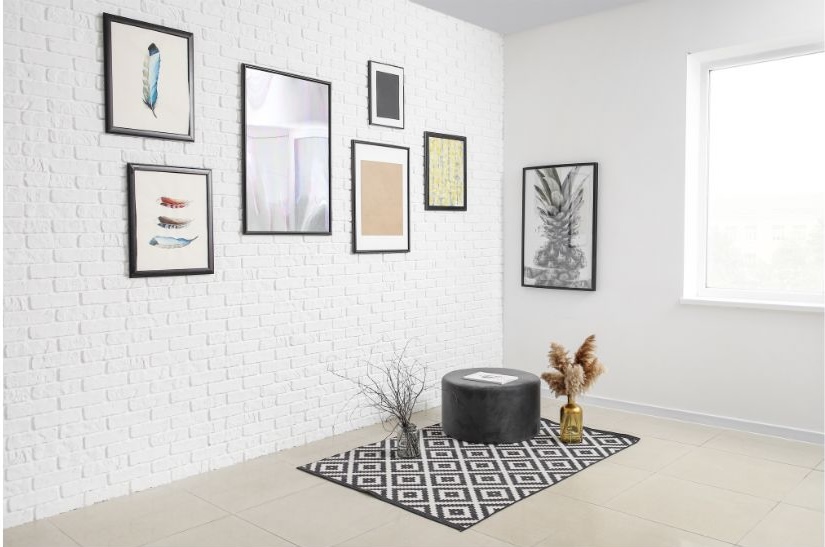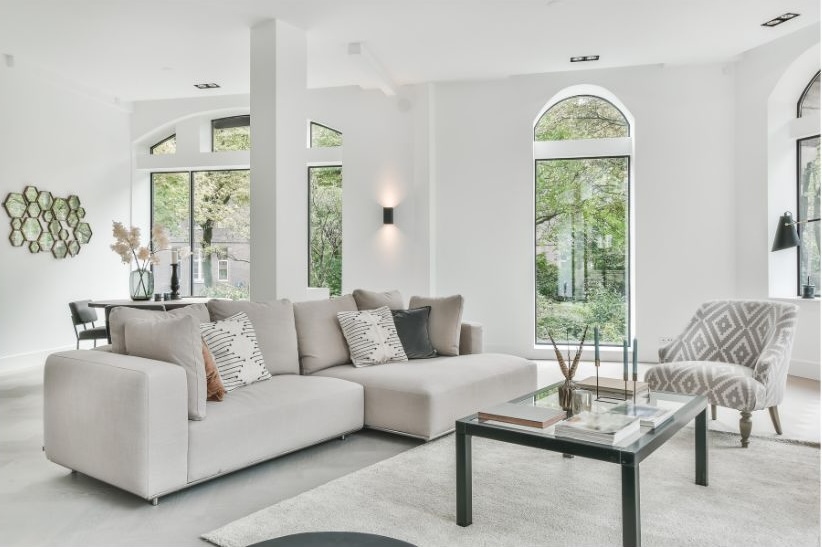A well-decorated home is more than just a collection of furniture and walls; it is an expression of style, comfort, and personal taste. Art and décor play pivotal roles in creating an ambiance that speaks to those who live there and to those who visit. Whether you’re moving into a new space or looking to refresh your current home, understanding how to effectively use art and décor can significantly enhance the appeal of your home. This blog explores essential tips and strategies for integrating art and décor into your living spaces to create an inviting and aesthetically pleasing environment.
1. Understanding Your Style
Before diving into the world of art and décor, it is essential to understand your personal style. Your home should reflect who you are, your tastes, and your personality. Are you inclined towards minimalism, where less is more? Or do you favor a bohemian style with rich textures, patterns, and colors? Understanding your style will help guide your choices in art and décor, ensuring that everything you select feels cohesive and intentional.
To identify your style, consider the following:
- Explore different design styles: Modern, traditional, industrial, rustic, Scandinavian, bohemian, etc.
- Create a mood board: Use Pinterest or a physical board to collect images that resonate with you.
- Consider your existing furniture and color palette: Choose art and décor that complements your current setup.
2. The Power of Color
Color is one of the most powerful tools in art and décor. It has the ability to transform a space, evoke emotions, and create a particular mood. When choosing art and décor, consider the color scheme of your room.
- Create contrast: If your walls are painted in neutral tones, choose artwork with bold, vibrant colors to create a focal point. Conversely, if your walls are bright, consider artwork in softer, more muted tones.
- Complementary colors: Use colors that are opposite on the color wheel to create a dynamic, harmonious look. For example, blue and orange or purple and yellow can be striking when paired together.
- Monochromatic palettes: If you prefer a more unified look, choose art and décor within the same color family. This creates a calming and cohesive effect.

3. Choosing the Right Artwork
Artwork is a significant element that can set the tone of a room. It is not just about filling up wall space but also about enhancing the atmosphere and telling a story. Here’s how to choose the right artwork for your home:
- Size matters: Consider the size of your wall when selecting art. A large, bold piece works well on a spacious wall, while a smaller wall might require a series of smaller artworks or a gallery wall.
- Theme and subject: Choose artworks that align with the room’s purpose. For a calming bedroom environment, consider soft, serene landscapes or abstract art in muted colors. In contrast, a dining room might benefit from vibrant, dynamic pieces that encourage conversation.
- Mix and match: Don’t be afraid to mix different styles and mediums. Combining paintings, photographs, and sculptures can create depth and visual interest in a room.

4. Creating a Focal Point
Every room needs a focal point—a spot where the eyes naturally land when entering the space. Art and décor are excellent ways to create these focal points. Here’s how you can do it:
- Statement pieces: Choose a large, eye-catching piece of art, such as a painting or sculpture, to serve as the focal point.
- Gallery walls: Create a gallery wall using a collection of framed photographs, prints, or paintings. This can work as a focal point and also add a personal touch to your home.
- Mirrors: Large, decorative mirrors can also serve as focal points. They reflect light, making the room appear larger and more open.

5. Layering with Textures
While art can be the highlight of a room, décor like textiles, sculptures, and pottery can add texture and depth, making a space feel more inviting. Layering with different textures can create a tactile experience that adds warmth and coziness to any room.
- Throw pillows and blankets: Use pillows and throws with different fabrics such as velvet, silk, wool, or cotton to add dimension to your sofa or bed.
- Rugs: Area rugs not only define spaces within an open floor plan but also add texture and warmth to a room. Choose a rug that complements the color and style of your room.
- Sculptures and pottery: Incorporate sculptures, vases, or other decorative objects to add an element of surprise and interest.

6. Incorporating Nature and Greenery
Plants and flowers are a great way to bring life, color, and texture into your home. They can soften the lines of furniture, add vibrancy, and even purify the air.
- Indoor plants: Choose plants that thrive indoors, such as ferns, snake plants, or succulents. Consider the lighting and temperature of your home when choosing plants.
- Flowers: Fresh flowers add a touch of elegance and can be changed regularly to keep things fresh.
- Natural materials: Incorporate natural materials like wood, stone, and wicker through furniture, frames, and baskets to bring a sense of the outdoors inside.

7. The Importance of Lighting
Lighting is often an overlooked element in home décor, but it plays a crucial role in how art and décor are perceived. Good lighting can enhance the beauty of your art and make your décor stand out.
- Ambient lighting: This is the general lighting of a room, typically provided by ceiling fixtures. It provides overall illumination and sets the room’s tone.
- Accent lighting: Use spotlights, track lights, or picture lights to highlight specific pieces of art or architectural features.
- Task lighting: For areas where you read, cook, or work, consider table lamps, floor lamps, or pendant lights that focus light on a particular task.

8. Curating Personal Collections
Personal collections, such as family photos, travel souvenirs, or antique pieces, can add a personal touch to your home. When thoughtfully arranged, these collections can enhance the appeal of your space and tell a story.
- Gallery walls for photos: Create a curated gallery wall featuring family photos or travel memories. Mix different frame styles and sizes for a unique look.
- Display shelves: Use shelves to display a collection of books, ceramics, or other cherished items. Mix heights and textures for a balanced look.
- Rotating collections: Change up your displays regularly to keep things fresh and interesting. Rotate art pieces or rearrange decorative objects every season.

9. Playing with Scale and Proportion
Scale and proportion are vital when decorating with art and décor. The size of art pieces, furniture, and accessories should be balanced to create a cohesive look.
- Large art for large walls: Ensure that large walls feature appropriately sized art. A small piece on a large wall may feel insignificant, while oversized art can overwhelm a small wall.
- Furniture and art balance: When placing art above furniture, such as a sofa or bed, ensure that the art is not wider than the furniture.
- Layering décor: Use small and medium-sized décor items together to create a dynamic and balanced look. A mix of tall and short items, for example, can create visual interest.

10. Creating Visual Flow
Art and décor should not only be visually pleasing on their own but should also work together to create a flow throughout your home. The aim is to create a cohesive look that moves smoothly from one room to another.
- Consistency in theme and color: Ensure there’s a thread of consistency in terms of style, color, or theme. This does not mean every room has to look the same, but there should be some common elements that tie everything together.
- Transitional spaces: Don’t neglect hallways, foyers, or transitional spaces. Use these areas to connect different rooms with cohesive art and décor.
- Varying heights and placements: Avoid placing all artwork and décor at eye level. Mix up heights and placements for a more dynamic and engaging visual flow.

Conclusion
Using art and décor to enhance a home’s appeal is about more than just filling empty spaces. It’s about creating an environment that feels comfortable, inviting, and uniquely yours. By understanding your style, strategically using color, creating focal points, layering textures, incorporating nature, and playing with scale and proportion, you can transform any space into a stunning representation of your personality and taste.
Remember, there are no strict rules—only guidelines that can help you achieve the look and feel you want for your home. So, get creative, trust your instincts, and let your home be a canvas that tells your story.
If there’s anything we can do to support you or if you have any questions about real estate please feel free to reach out to me and my team we would be happy to help you. We love being Sacramento’s real estate resource. Till next time Sacramento!





